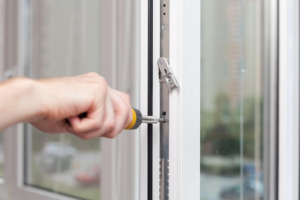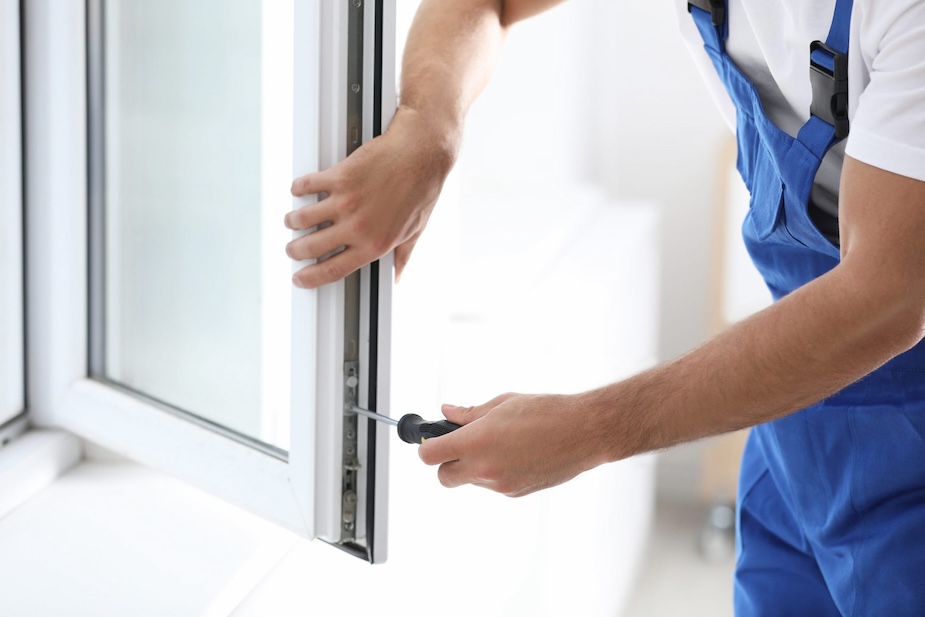What NOT To Do With The Lock Replacement Industry
페이지 정보
작성자 Natisha 작성일25-02-17 14:26 조회5회 댓글0건관련링크
본문
 Door Lock Replacement - What Are the Different Parts of a Door Lock?
Door Lock Replacement - What Are the Different Parts of a Door Lock?A damaged door lock could make your home a to target for burglars. Change your locks can be an inexpensive method to improve security without making your doors inaccessible.
Many locks come packaged with a cardboard template that you can use to wrap around the edges of your door to ensure it fits properly. This will help you avoid buying the wrong lock.
The Cylinder
The cylinder, also referred as the lock body is the most important component of a traditional door lock made of mechanical. It contains a series spring-loaded pins that keep the door shut in the event that no key is inserted in the hole. When a key is placed in the hole, the uneven edge of the knob pushes the pins of the cylinder into their proper place. When the pins are in position, they allow the bolt (also known as the latch) to move forward, connecting to the inside of your doors.
The bolt extends from the cylinder into a hole in your door frame called the box. The box is designed to fit the bolt snugly so that it won't be easily opened. A clip spring keeps the bolt retracting when the door is closed. When you turn the handle and the spindle inside the cylinder spins. When it's done rotating the slanted side of the bolt is retracted into the doorframe. The bolt rests in the carved-out area of your doorframe, keeping the door shut until you are required to open it once more.
A faceplate is an interior metal plate that is attached to your door on either side of the hole for the deadbolt. Its purpose is to safeguard your locking mechanism from damage that may be caused by the repeated removal and insertion of the knob. Installing a new lock? Make sure that the faceplate is in alignment with the hole in your door frame. Also, ensure that the faceplate is securely attached both to the plate and the bore of the latch.
If you're replacing the door lock, make sure that the deadbolt is fitted correctly by sliding it into the strike plate's opening hole. Once you're done you can screw the strike plate and the core of the new lock into the hole. Don't over-tighten, as this could damage the latch or prevent it from fitting into its groove. It's a good idea test your new lock by turning the key when it's in the locked position. If you notice any issues, like loose latches or a loud deadbolt, it's time to replace the old lock with a brand new lock.
The Faceplate
A faceplate is an over-sized flat plate that is attached to the headstock of the lathe to support the workpiece. It has a variety of screw holes in it, through which the screw thread enters from the back and winds into the wood. Faceplates can be used to support a variety of shapes, but they are more difficult to employ than a chuck as they must be placed in a fixed position, balanced, and fixed.
A typical faceplate is fitted with a number mounting holes. In this case three holes are placed at 120 degrees to receive the screws for mounting in FIGURE. 2. These screw holes are machined through an interchangeable insert 16 or directly into the faceplate's body. A portion between the faceplate is a stepped section that serves as an index mark to identify a specific place on the blank of the workpiece.
The stepping area is also resistant to abrasion so that the fastener will not cause damage to the chisel that is used to cut it. The surface of the body of the faceplate has distinct properties compared to the surrounding region. Machining into this area alerts the operator of a possible contact with the fastener and gives the turner enough time to react.
Screws used to hold a faceplate in place should be of a size that seats inside the screw hole area with just a small amount of free play. When the screw is fastened to the block of glue, there must be no space behind it. This can allow the block to rotate to shift. A larger-gauge screw will also fit more securely on the faceplate. The screw should pass through the middle of the screwhole in order to reduce the possibility that a screwhead might come into contact with the workpiece.
The Strike Plate
The strike plate is a crucial element of the door lock. It is what prevents the bolt from sliding out when you close the door. The strike plate is also what helps to reinforce the strength of the lock and prevent intruders from breaking in by using force against the jamb and latch bolt.
A strike plate is an heavy metal plate that is positioned in the doorjamb or the vertical portion of the frame. It has a hole through which the deadbolt or latch can be inserted. When the cylinder rotates it shoots the bolt through the strike plate and into the doorjamb while keeping it shut.
There are various kinds of strike plates to choose from according to your requirements. If you require strike plates that work with your specific lock, it will be listed in the information for the product. In other cases, most strike plates are identical and will work with most standard double glazing window locks repairs and latches.
Standard strike plates are fitted with ovular screws as well as an "C"-shaped piece that serves as washer. They are often used on doors with round corners. They are available in various sizes to match the door.
For additional security, you can choose a strike plate that has no lip and is designed specifically for deadbolts. This is an excellent choice for areas where security has to be quickly achieved such as staircases. This is a great option for those who want to secure items or documents inside your home.
Installing a box strikeplate will increase the security of your doors. It adds thickness to the strike plate and strengthens it. This makes it more difficult to get in through the deadbolt or latch, and it's often required for commercial doors with security locks.
If your strike plate isn't aligned with the latch bolt, try spraying it with a quality lock lubricant. If this doesn't work, you will have to modify the strikeplate by drilling new screwholes and widening the hole for your catch. Be cautious not to make numerous adjustments to the strike plate as repeated and extreme adjustments can weaken it to the point where it's no longer effective.
The Deadbolt
A deadbolt is a steel bolt that connects the door to the doorjamb frame. A deadbolt lock differs from a spring-latch found in doorknobs. Instead of being loided with credit cards, or using professional tools such as latch slips, it can be locked by keys, thumb-turns, or electronically. They are simpler to use and require less maintenance. They also offer better protection against forced entry methods such as kick-ins.
The bolt extends through a hole or socket in the doorjamb which is reinforced by a strike plate for extra security. The bolt should be minimum of 1 inch in length to make it harder to remove the door. It is also essential to choose a deadbolt that has an ANSI rating that indicates how securely the lock has been tested.
The strike plate also holds the cylinder in position. Three holes should be drilled along the bolt. One of them connects the facepiece to the cylinder and the remaining two are on either side of the central hole. The screws are inserted into these holes to attach the bolt and cylinder. The screws must be included with the new deadbolt. Some repair broken window lock repair double glazing window locks repairs (www.metooo.co.uk) have decorative covers which attach to the facepieces. Check the instructions of the manufacturer to ensure that the covers are properly installed.
When selecting the best lock for your home take into consideration your lifestyle and the level of security you need. Single cylinder deadbolts, which are the most popular type of window lock repairs, are found on many exterior doors. Keyless deadbolts are more secure however they can be difficult to operate. Smart deadbolts allow you to lock and unlock them using voice commands, or via an app on your mobile.
A professional locksmith can help you determine what type of lock is best for your home, and install or replace it. Upgrade your front door lock system to improve the security of your home. You can consider installing a double glazing window lock repair-cylinder, or reversible deadbolt on the side of your front door to provide an extra layer of security.

댓글목록
등록된 댓글이 없습니다.
